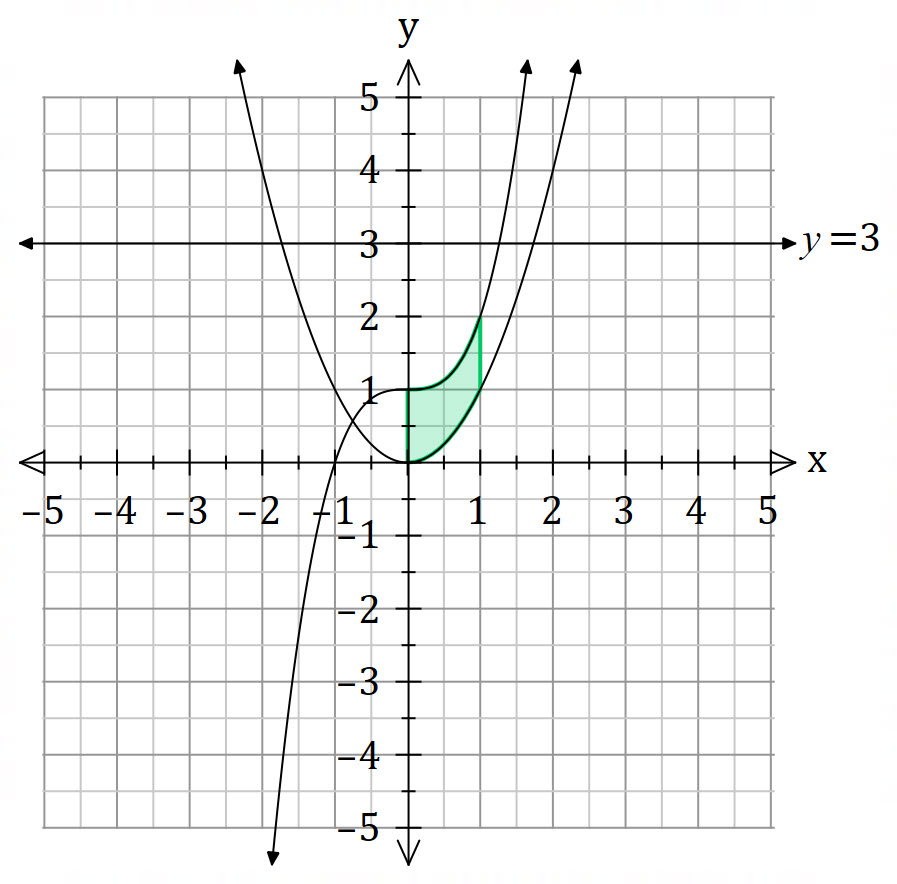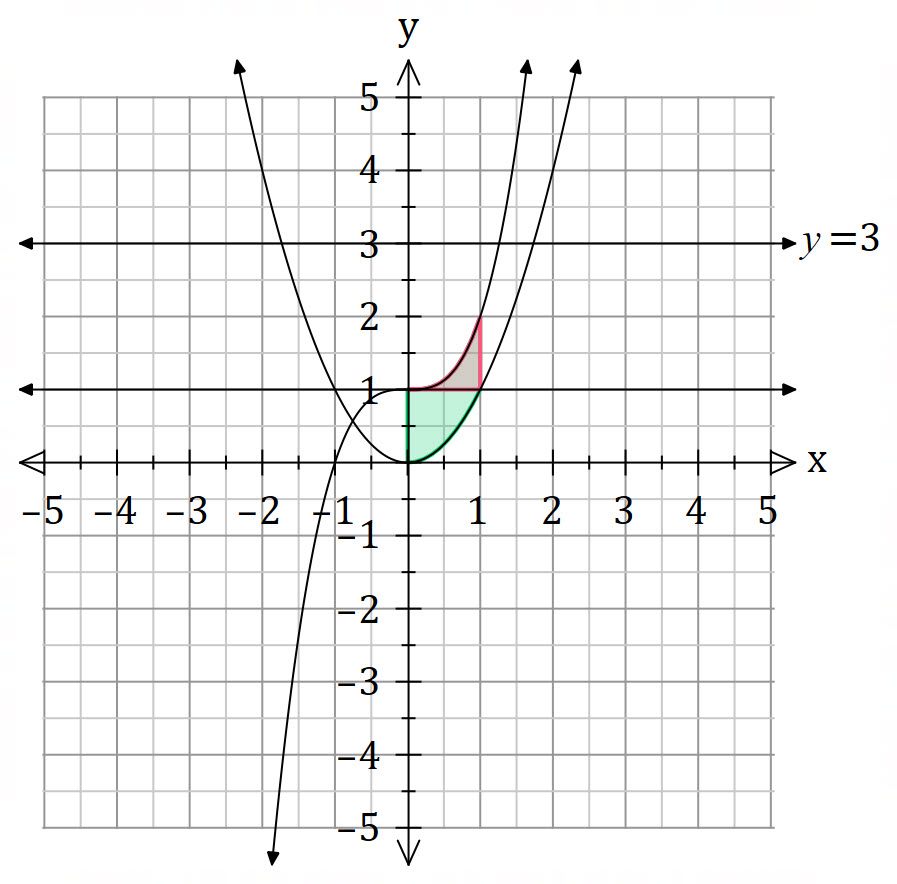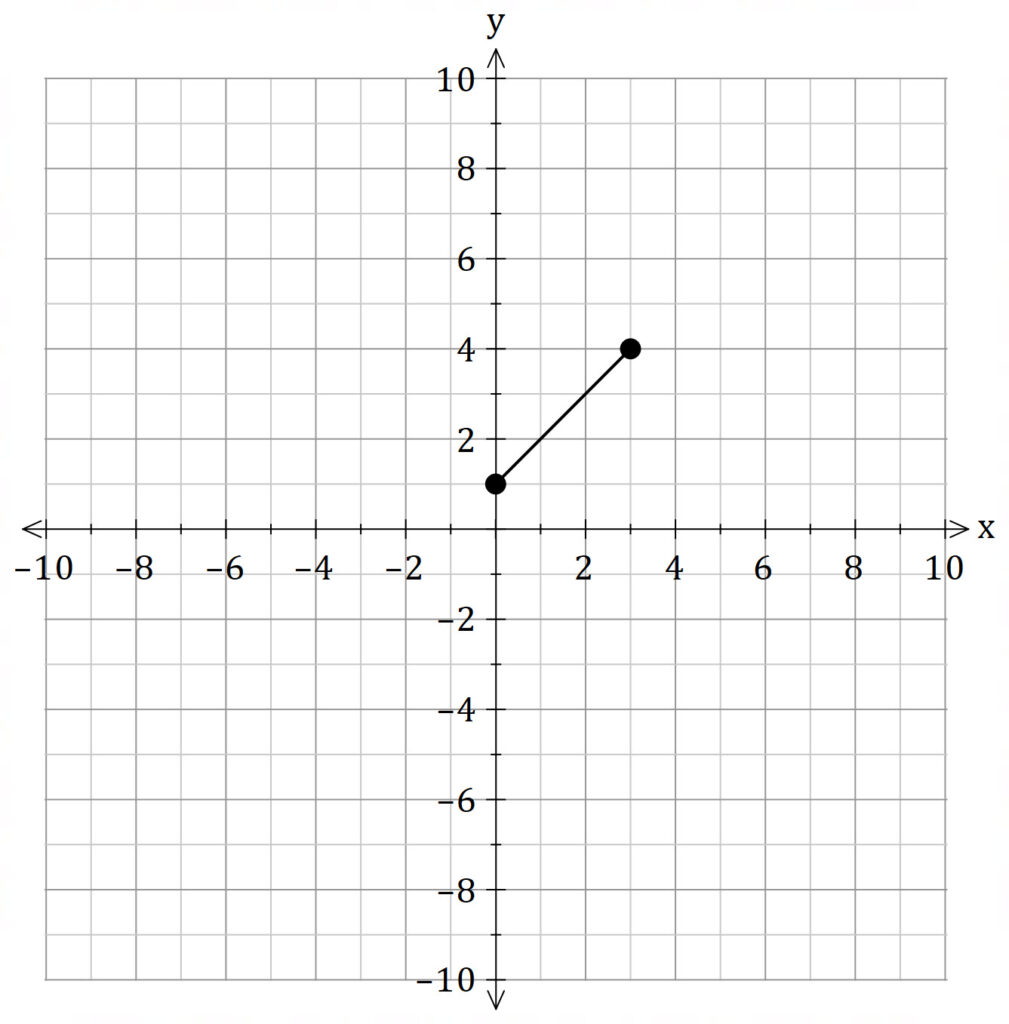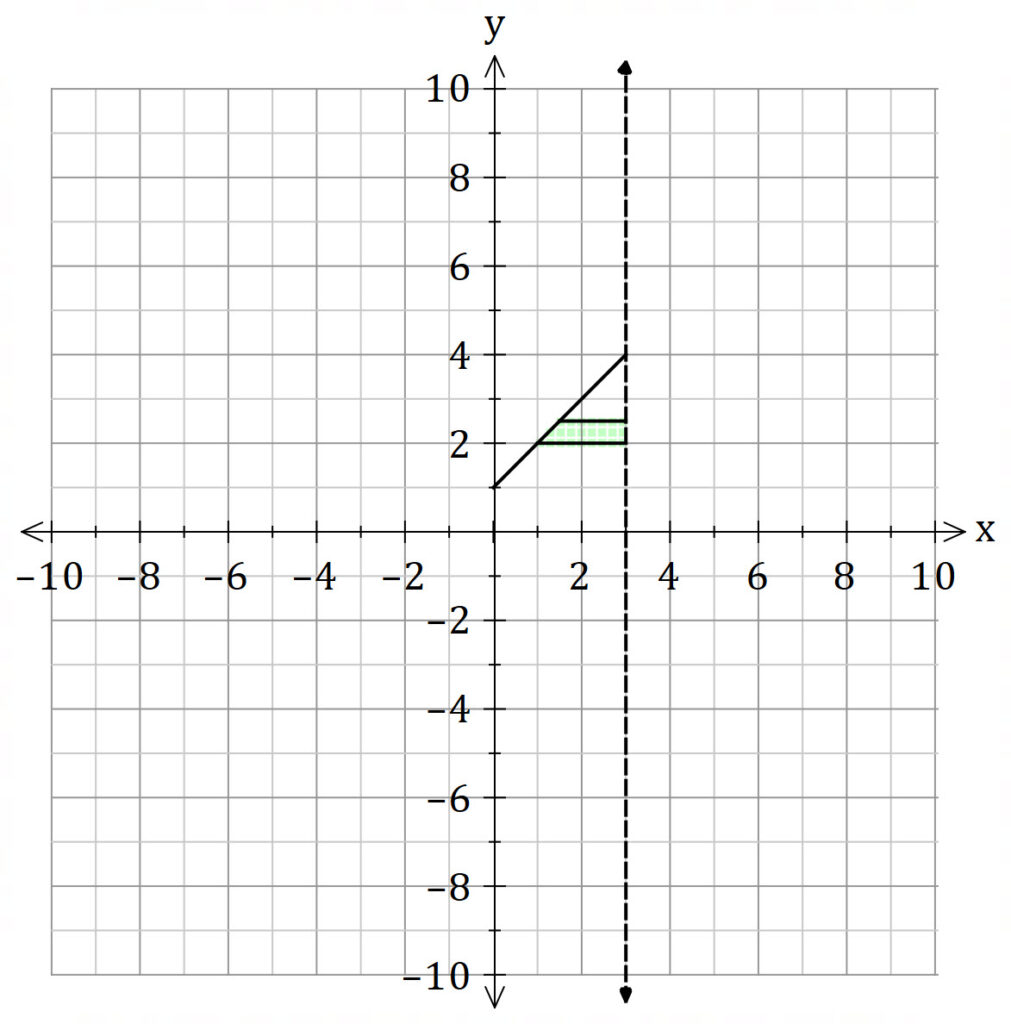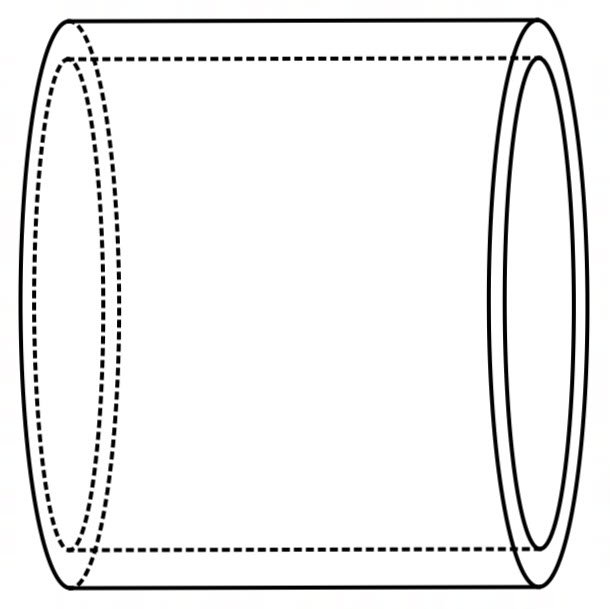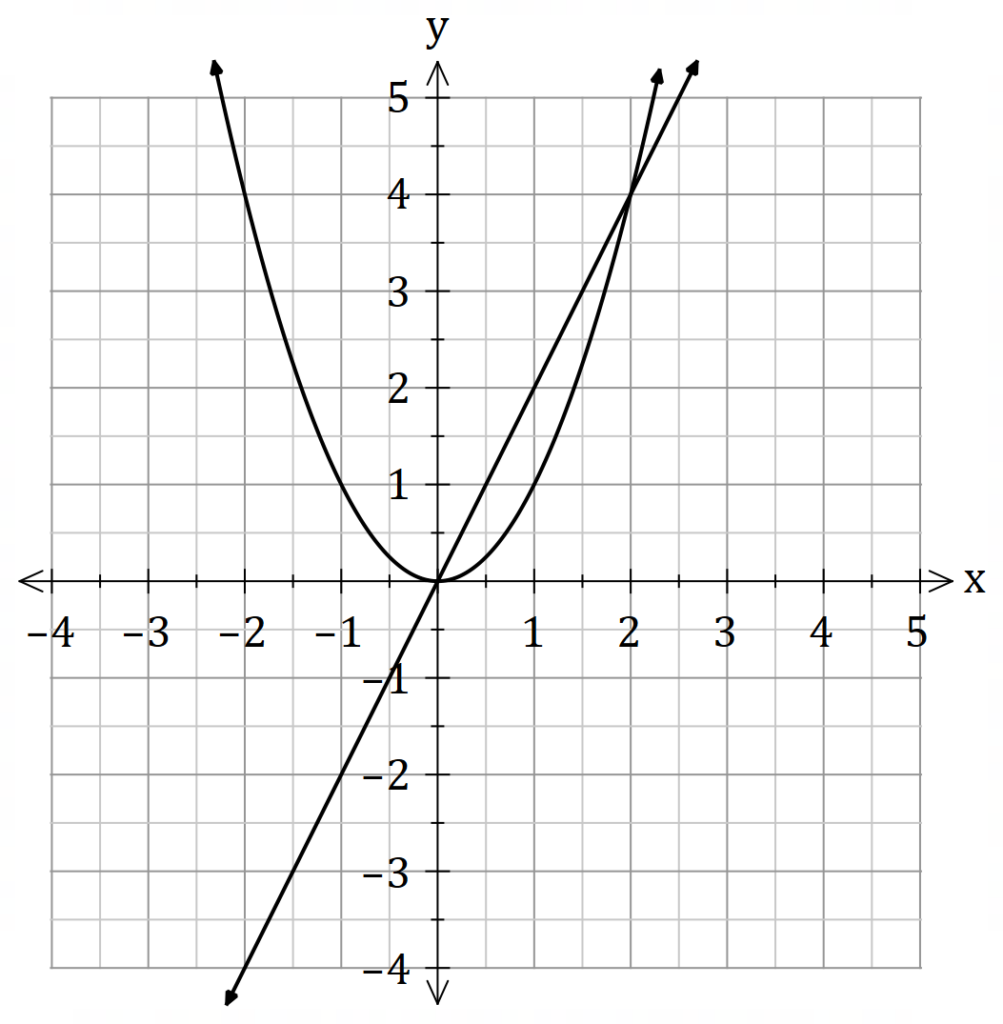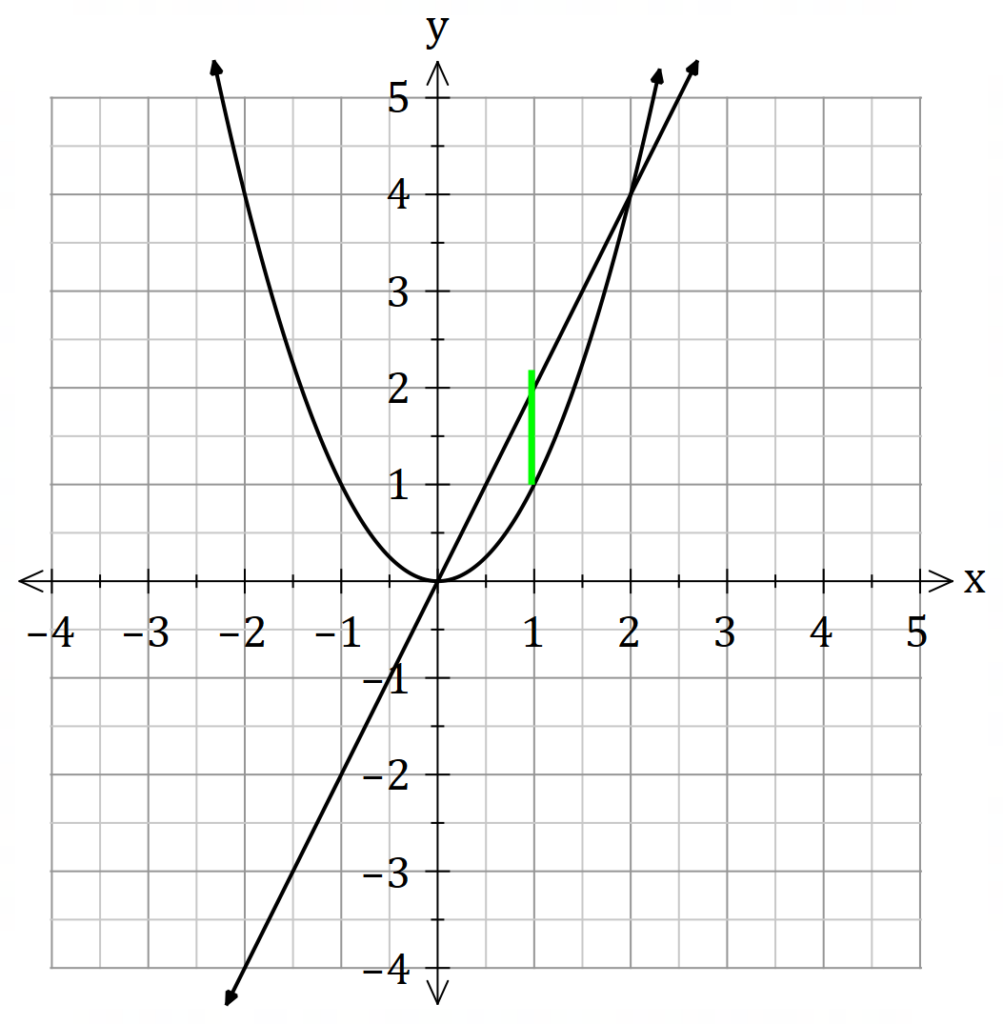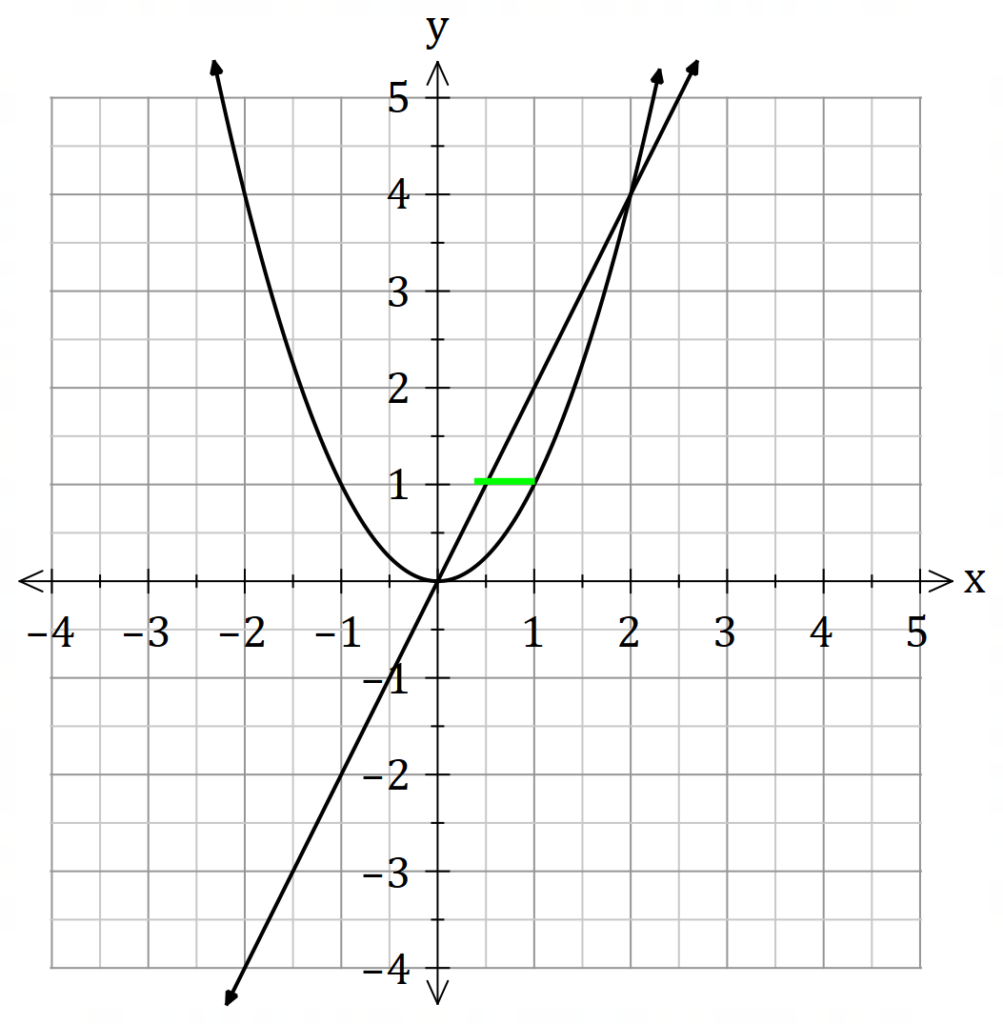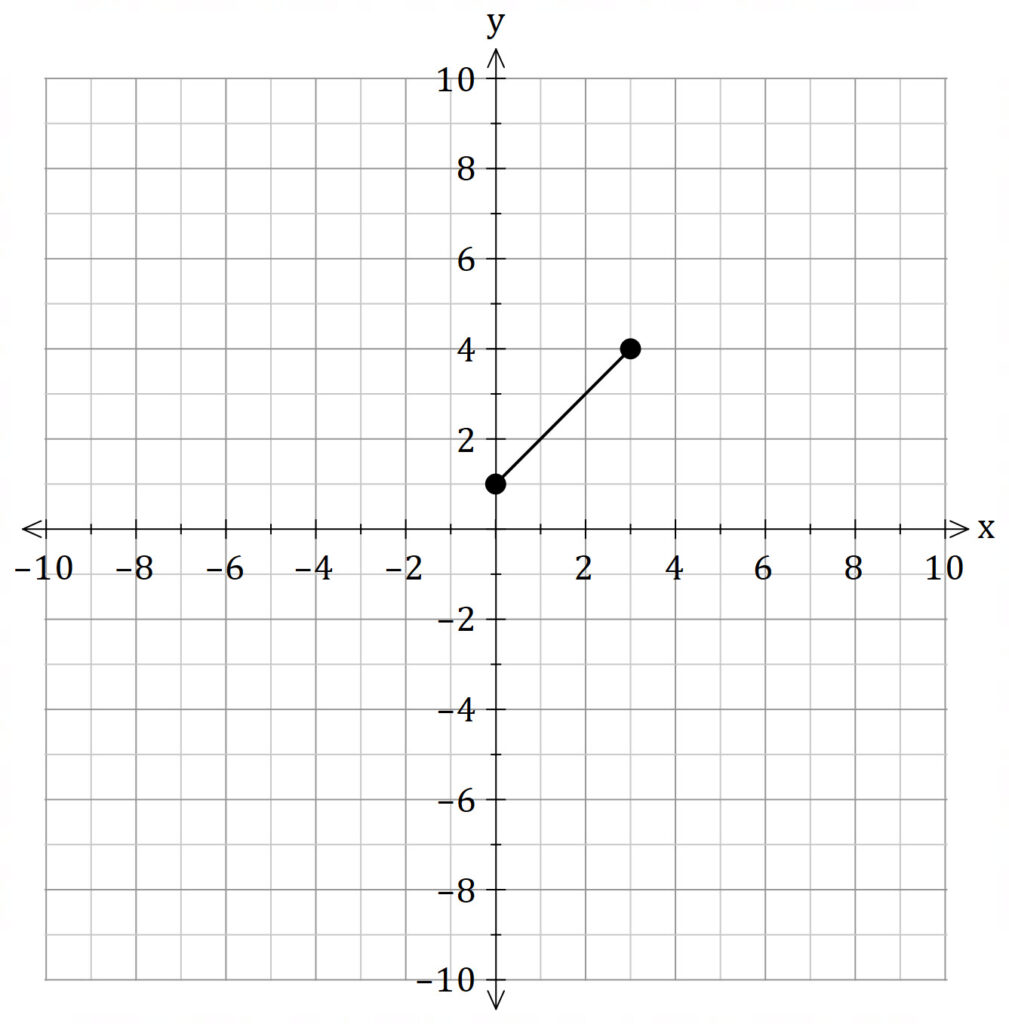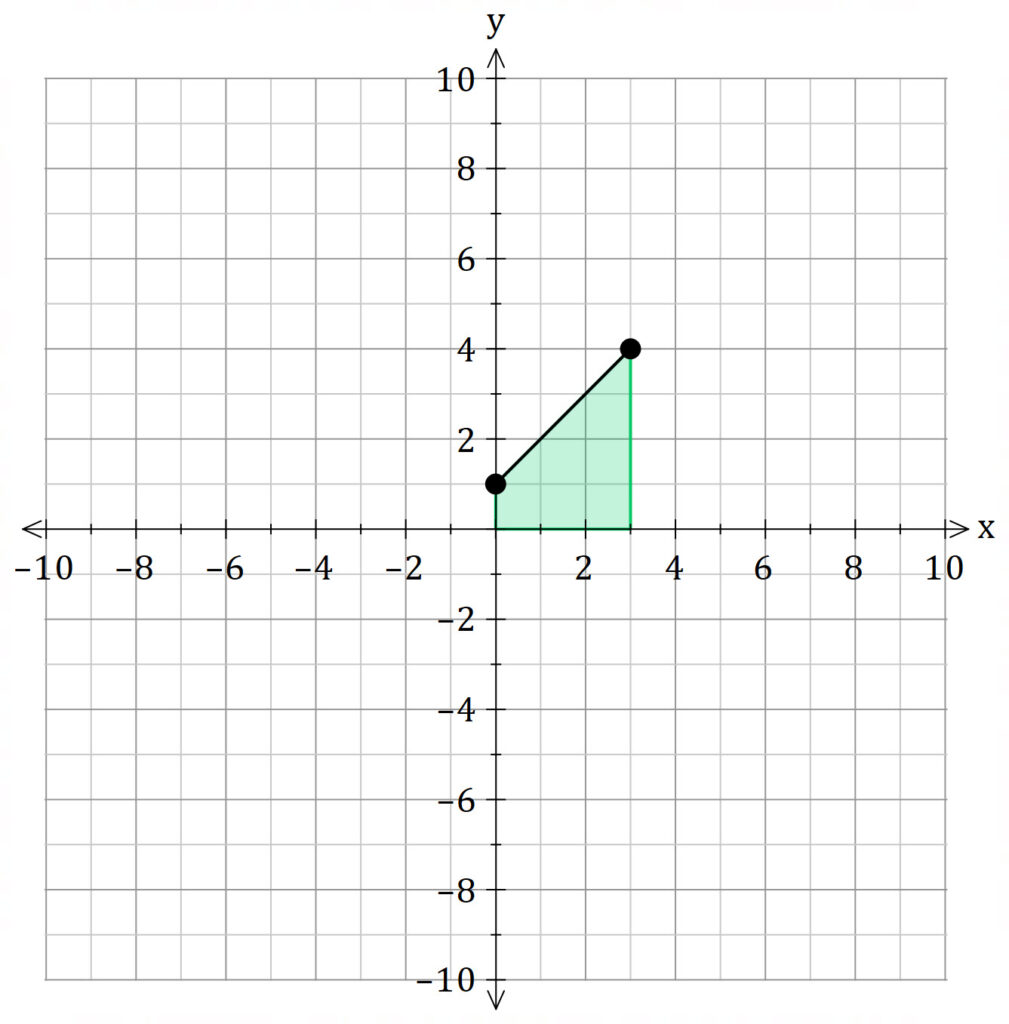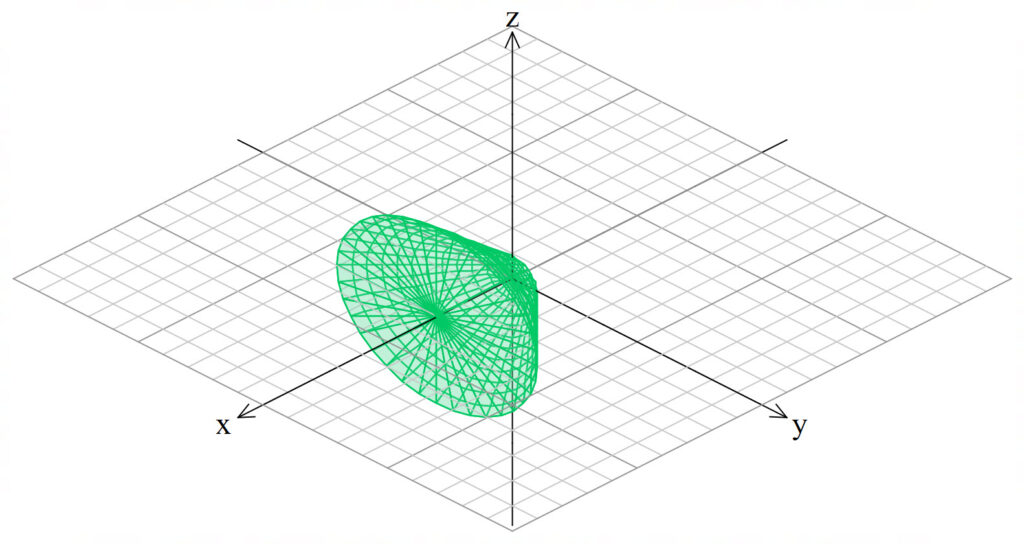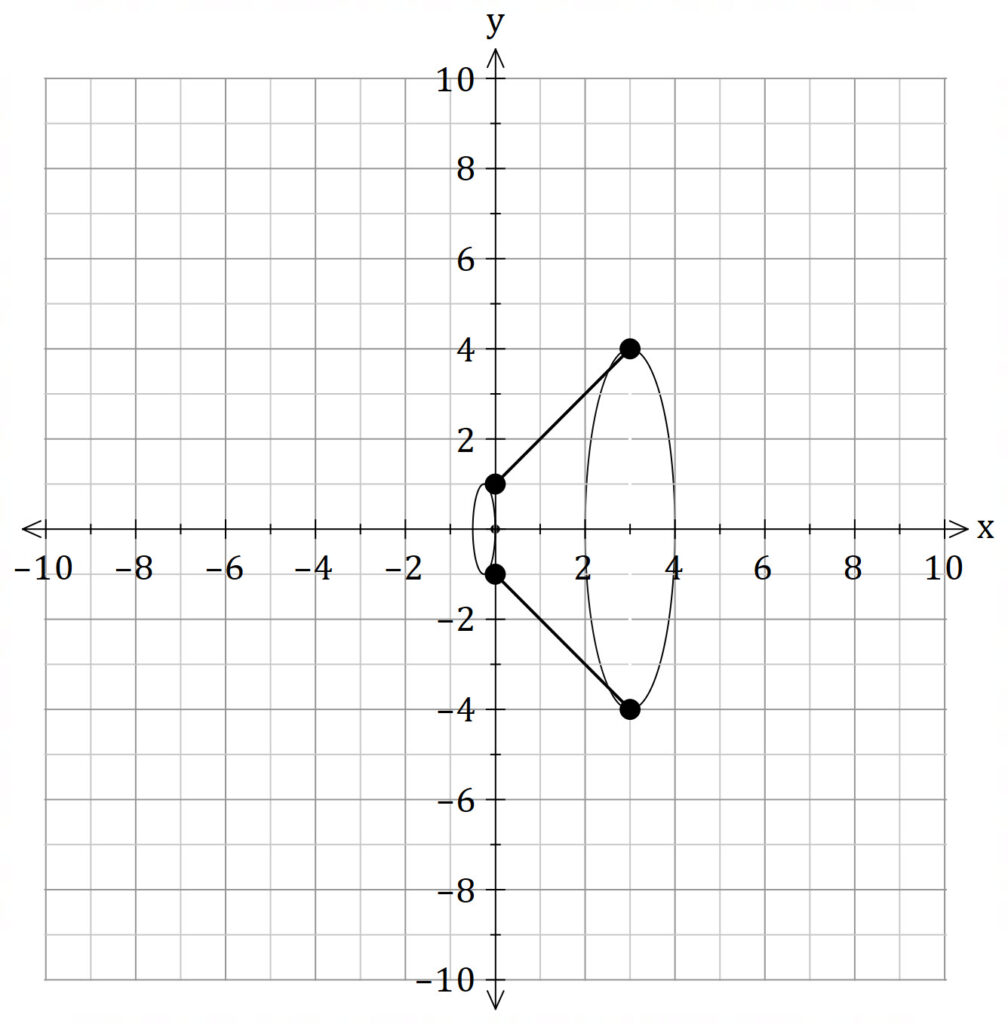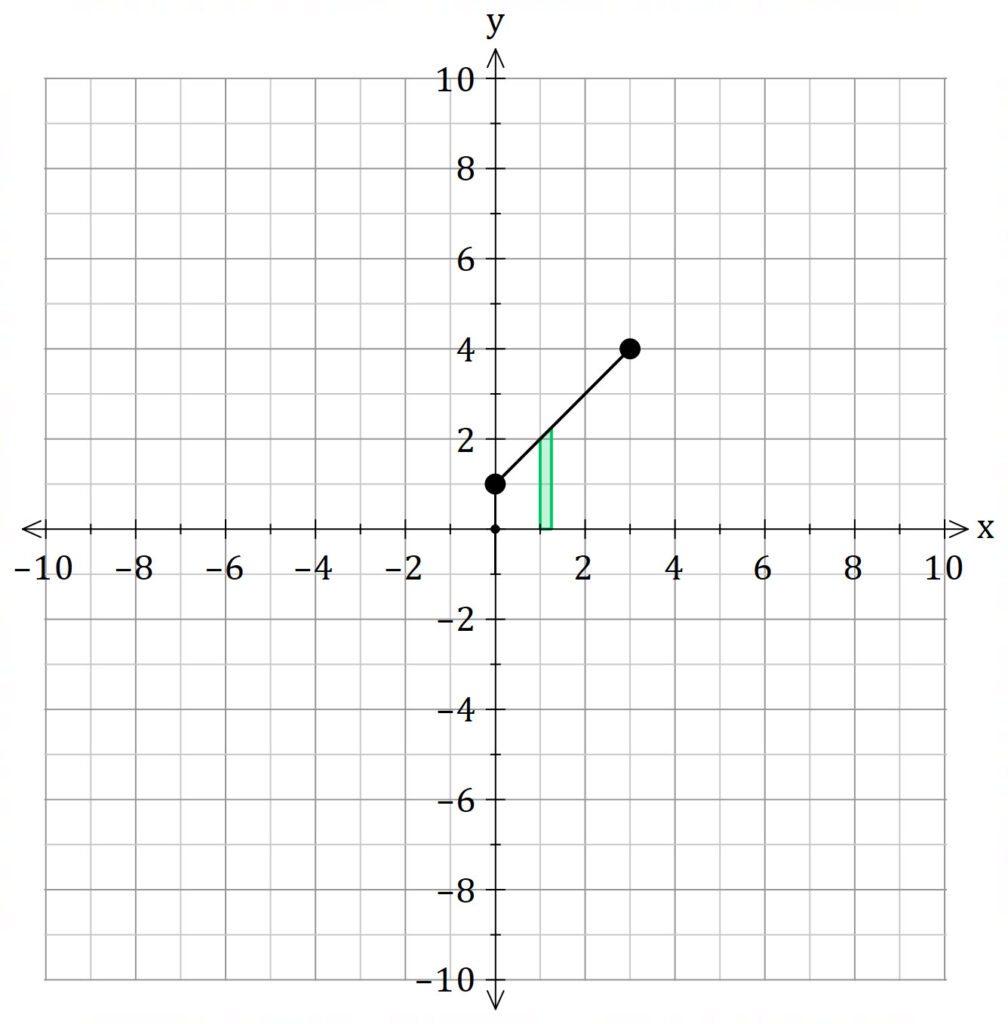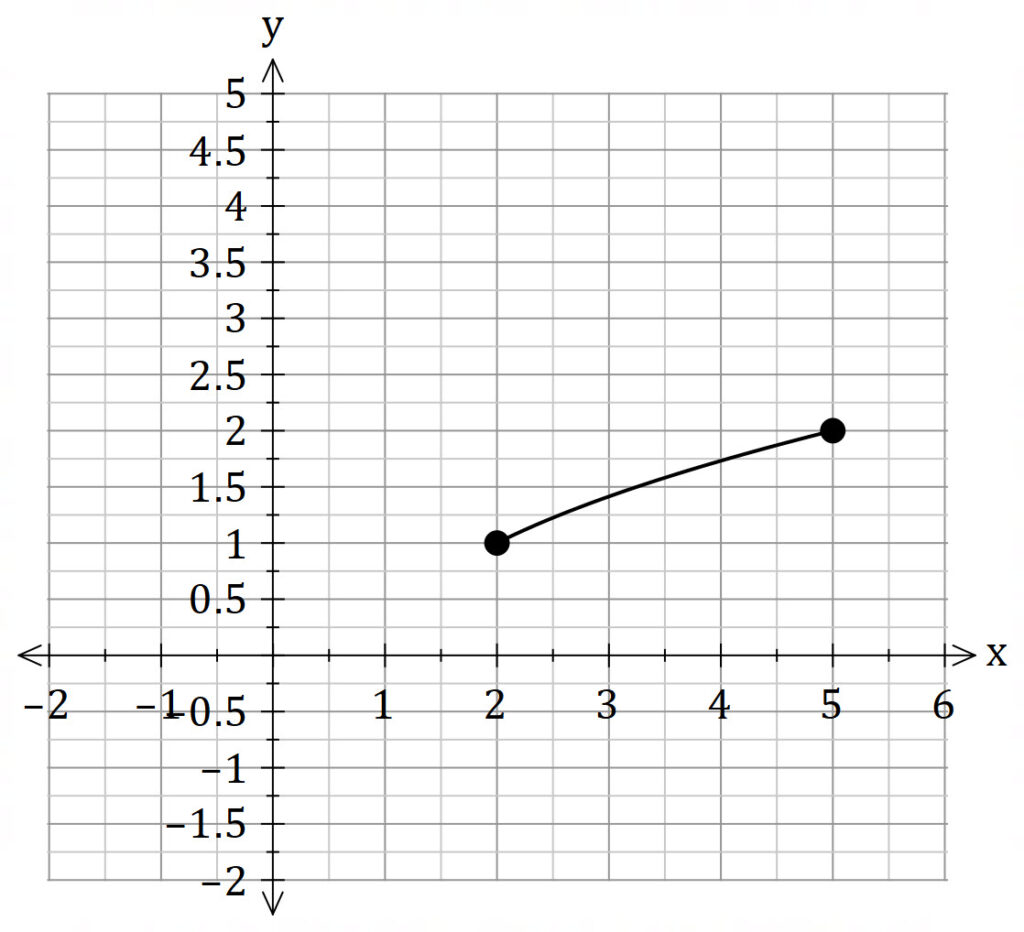Given the area in the first quadrant bounded by
, the line
and the
axis. What is the volume generated when this area is rotated about the line
?
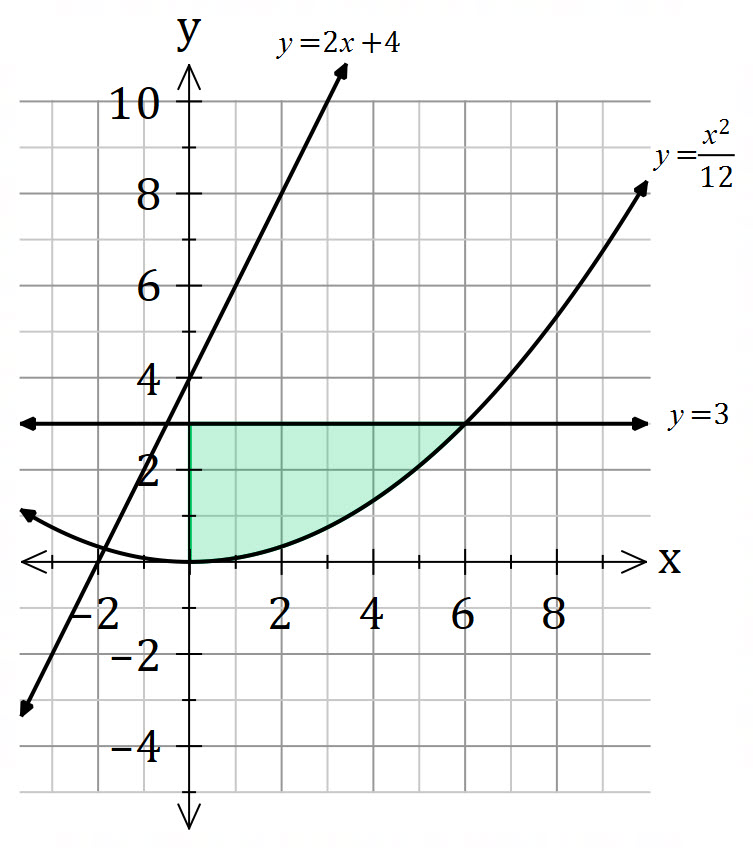

We can split the solid into shells.
![]()
Where ![]() is the distance from each
is the distance from each ![]() point in the region to the line
point in the region to the line ![]() ,
, ![]() is the width, and
is the width, and ![]() is the height.
is the height.
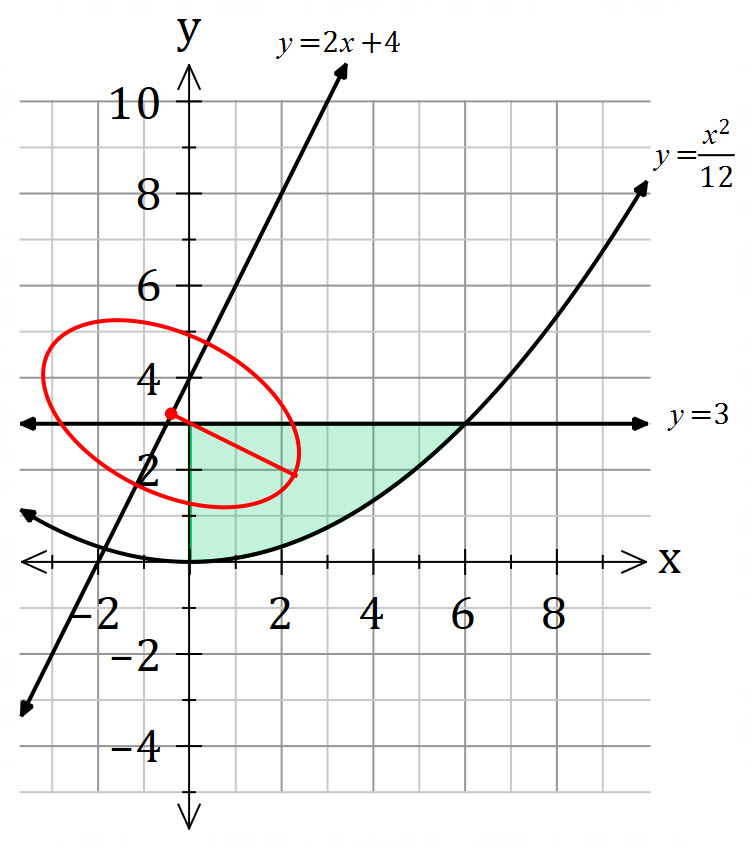
The distance between a point and a line is
![]()
Hence, ![]()
![]()
Now we just need to work out the bounds.
![]() and
and ![]()
![]()
![]()
![]()
![]()
![]()
![]()
![]()
If we rationalise the denominator
![]()

